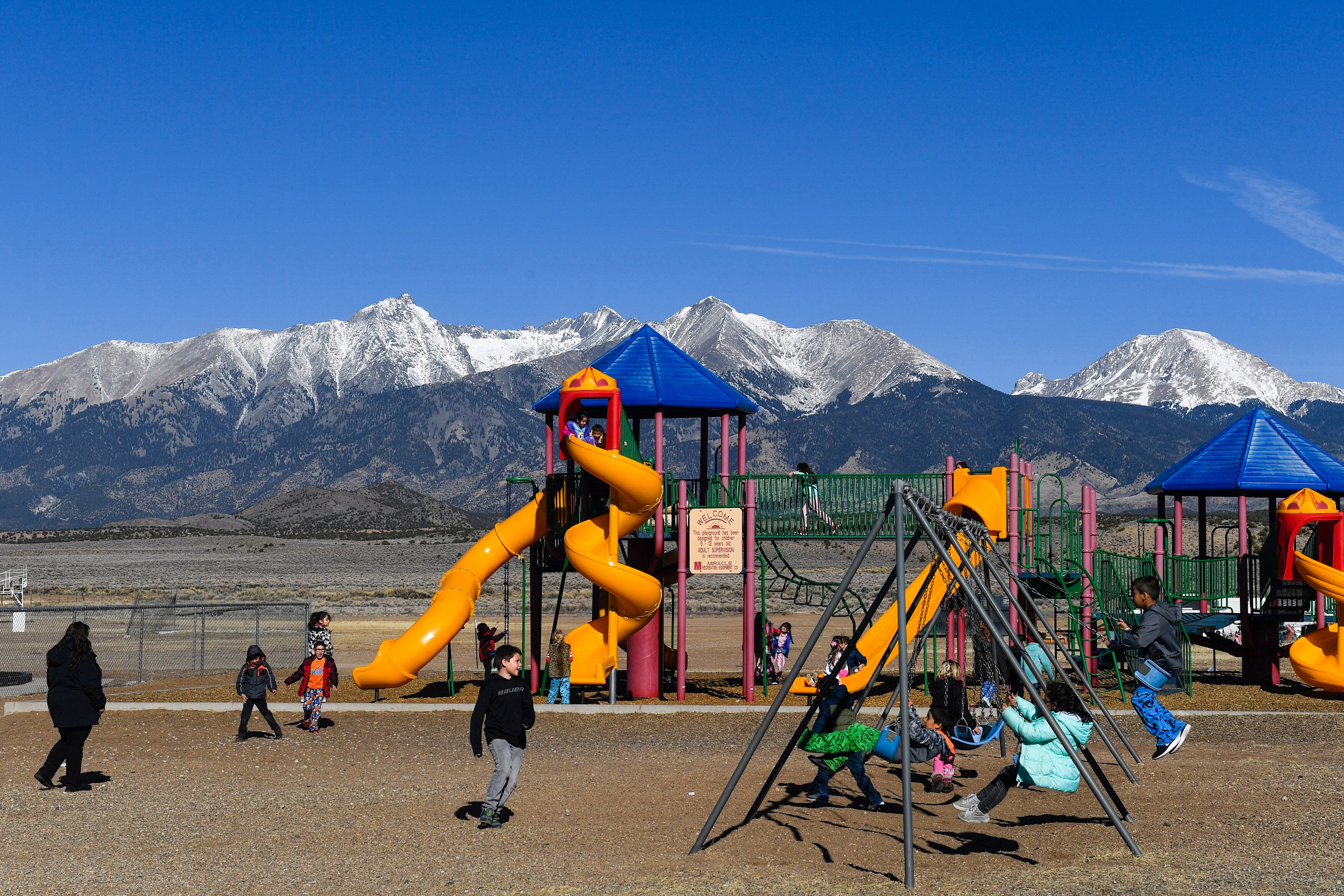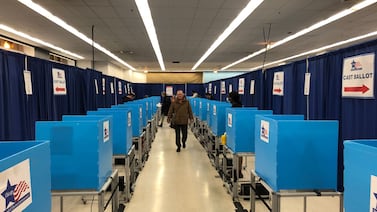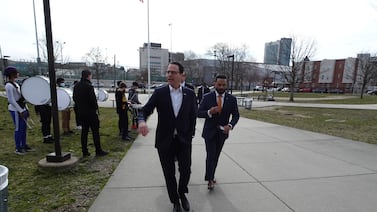Sign up for Chalkbeat Colorado’s free daily newsletter to get the latest reporting from us, plus curated news from other Colorado outlets, delivered to your inbox.
As Speaker Julie McCuskie stood at the House dais in the Colorado Capitol on Tuesday, a typically rambunctious chamber listened intently.
The Dillon Democrat explained how her Summit County school district has the property wealth and voters to raise taxes to support schools, including for transportation, technology, and capital projects. But when she visited Center Consolidated School District in the San Luis Valley, which is in a rural area, has low property wealth, and less local tax money to fund schools, McCluskie said she found educators there operated with much fewer resources.
The story, meant to rally support for a rewrite of the state’s school funding formula, showcased why some communities need more help from the state, she said.
“We have an obligation, we have a responsibility, to think about all four corners of this state,” McCluskie said. “Our decisions need to be to equitably share state resources so that every single kid gets a fair shot.”
Throughout the last few weeks, McCluskie and other rewrite supporters have argued this point — that the proposed formula changes would give more money to districts serving students with the most needs, and then prioritize higher funding for small and rural districts like Center. So far, lawmakers have agreed. The bill passed the House a day after McCluskie’s speech on a 54-10 vote, with one lawmaker excused, and will now be heard in the Senate.
But the immediate financial impact on district budgets, especially on rural schools the formula is designed to help, would likely be a mixed bag, according to superintendents.
Most districts would get more funding but a few others — including a handful of rural districts — would get less money over time, compared to the current formula. And those slated to get an increase would still have other financial pressures, such as the end of federal COVID relief funding or, in some districts, declining enrollment.
“There are still some unknowns,” said Michelle Murphy, the executive director of the Colorado Rural Schools Alliance, which represents rural schools. “But there’s a whole lot of excitement and hope.”
School funding formulas create perceived winners, losers
For years, smaller districts have complained that larger districts, especially those with high property wealth, benefit the most from the current formula.
The rewrite, proposed in House Bill 1448 and more than a decade in the making, flips the current 30-year-old formula and creates a new set of perceived winners and losers.
Currently, Colorado sets a base per-pupil funding amount. Then it uses factors such as district enrollment, cost of living, and the number of students living in poverty as weights to determine actual per-pupil funding for each district. The higher a district’s enrollment, cost of living, and number of students living in poverty, the higher its per-pupil funding.
The proposed formula would first send money to districts based on the number and type of students they are serving. Districts would get a set amount of dollars for each student, similar to the current formula, and then additional dollars based on student characteristics, including whether students are in special education, are learning English, or are considered at-risk based on low family income.
The proposed formula then considers the size of a district and the cost of living there.
To support changes, the bill calls for the state to spend $500 million more over six years’ time — or an annual increase of about $83 million. The state would use either general fund revenue or education savings.
The bill also creates a funding floor so no district gets less money than in the 2024-25 year.
More money for most rural schools
Like McCluskie said at the dais, Center is one of the districts that would benefit from the new formula.
Superintendent Carrie Zimmerman said she believes the district would get a few hundred thousand dollars more, which would provide many benefits.
The extra money would mean she could hire a licensed teacher in every classroom who has the training to work with kids who need the most intensive support. She also said it might mean smaller class sizes for students.
The money would also help Center schools recruit teachers and help them pay for long commutes in the valley. In addition, the extra funding would help the district provide or maintain after-school and summer programs, she said.
Zimmerman said about 80% of the district’s families live below the poverty line. About 40% of the students also are English language learners.
Meanwhile, Gunnison Watershed School District, which is projected to receive one of the highest funding increases through the proposed formula, faces challenges due to the impending expiration of pandemic relief money in September.
The school district, which geographically is the size of Rhode Island and Delaware combined, also pays more for gas to transport students and to bring in contractors to fix problems like a broken HVAC.
The end of COVID aid also puts the district at risk of losing staff who help students improve their math and reading skills, as well as counselors, said Leslie Nichols, the district’s superintendent.
Gunnison isn’t alone. Other districts have leaned heavily on federal funding, in part because their state funding has been so low. East Otero School District Superintendent Rick Lovato said the new formula would allow him to keep positions he’d otherwise have to cut.
Meanwhile, Kermit Snyder, Rocky Ford superintendent, said a bigger issue for him is declining enrollment.
“Without the formula change, we’d be in a greater fiscal emergency,” he said.
School funding change doesn’t address all concerns
The changes haven’t received universal support.
Districts that won’t get as much additional money as others say the proposed formula fails to account for the challenges they face.
Telluride School District Superintendent John Pandolfo said by flipping the cost of living factor, his district stands to get less money over time. Telluride is in a rural and mountainous area, but is one of the more affluent in the state due to the city’s famous ski resort.
Pandolfo said he’s a firm believer in funding student needs, but he can’t support the measure when it so negatively impacts his district.
Teachers in his district can barely afford rent, he said. He added that he’s already successfully asked voters for tax increases and is unsure whether asking for another would be reasonable. Plus, local ballot measures, even when they’re successful, make the area only more expensive and harder for teachers and some families to afford, he said.
Pandolfo also raised a longstanding concern about Colorado education funding: The state does not spend nearly enough money on its schools. He said changing the formula doesn’t fix that problem.
No district has the money it needs from the state, he said, which means no student “is learning to the level that they can and should be learning.”
Back at the dais in the state Capitol, McCluskie acknowledged that shortfall and said she supports, in theory, asking voters statewide to raise taxes for schools.
But she said the time is now to act on the formula.
“We need more money for public schools,” she said. “But it is time to make a commitment to equity.”
Jason Gonzales is a reporter covering higher education and the Colorado legislature. Chalkbeat Colorado partners with Open Campus on higher education coverage. Contact Jason at jgonzales@chalkbeat.org.







